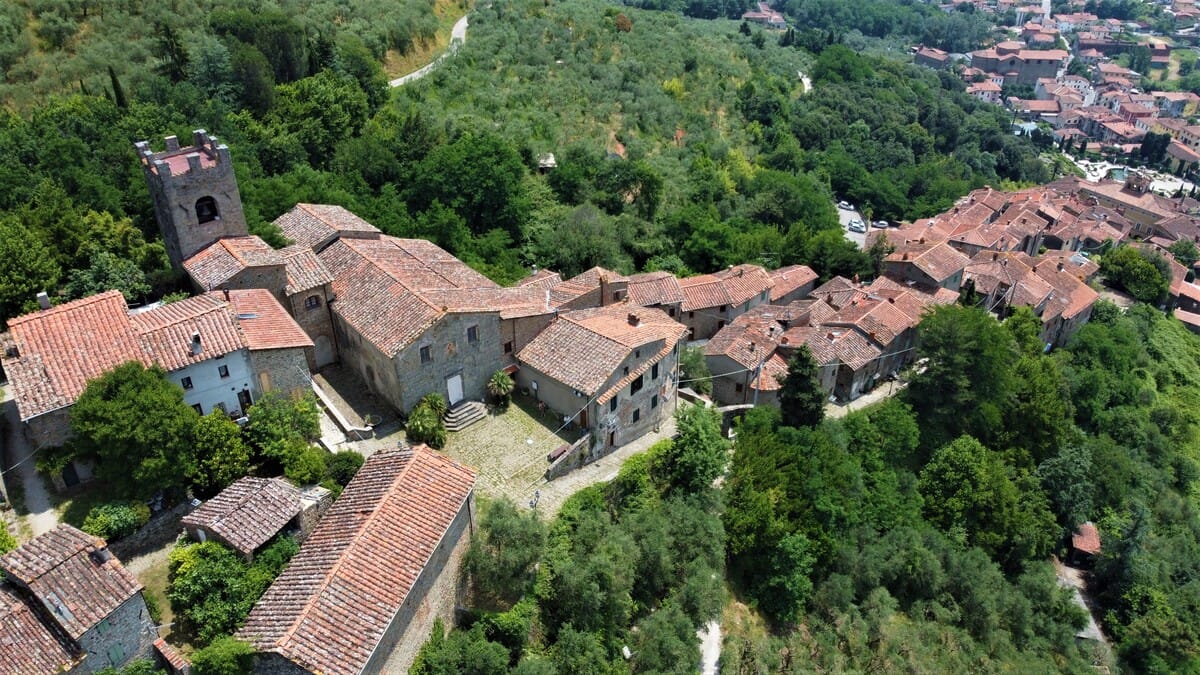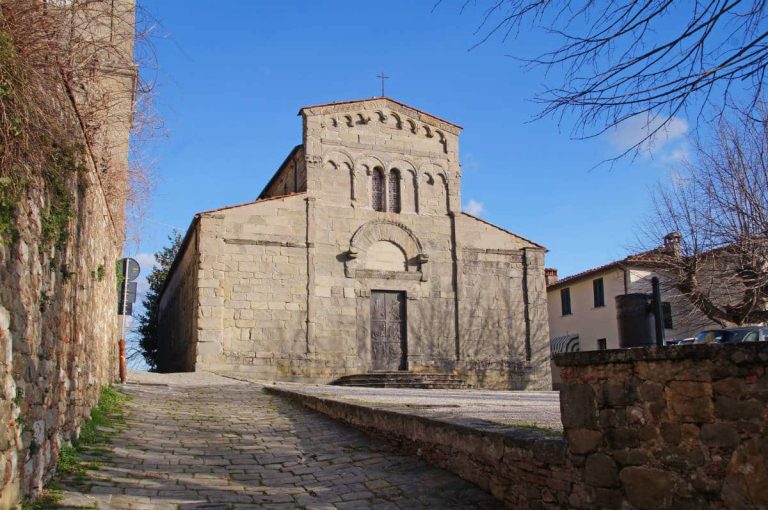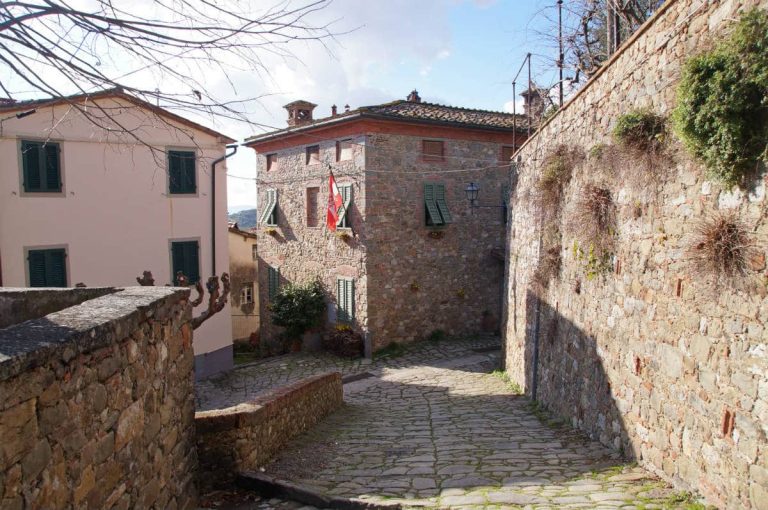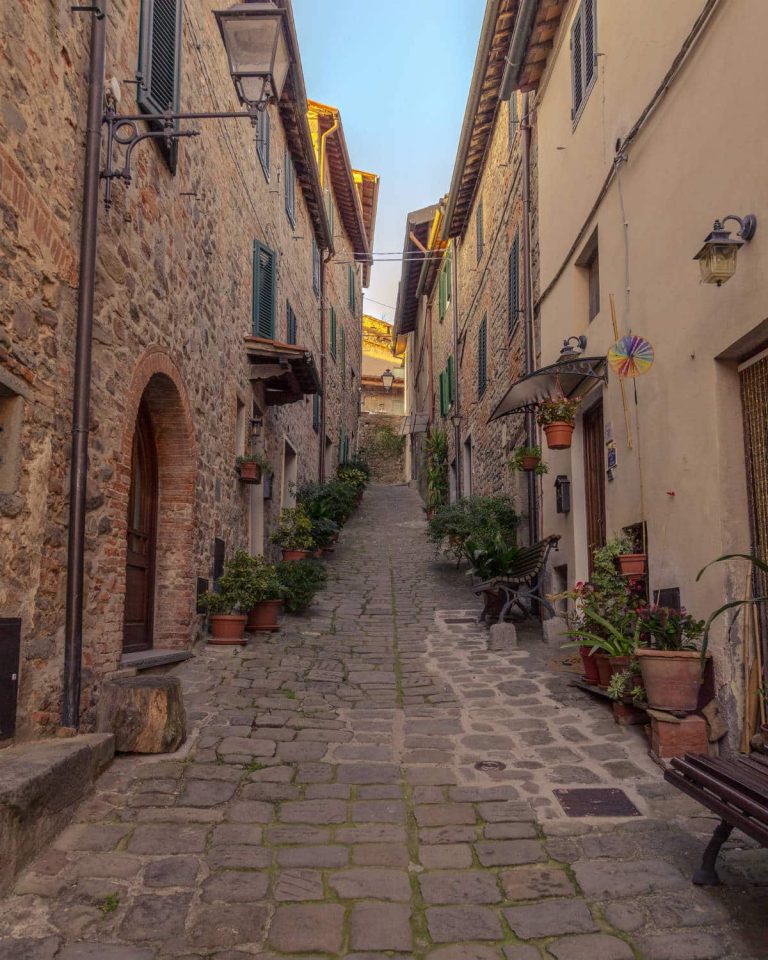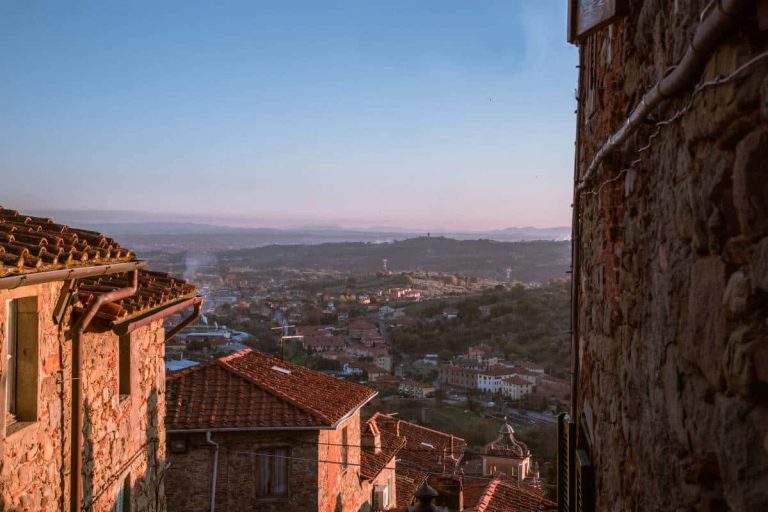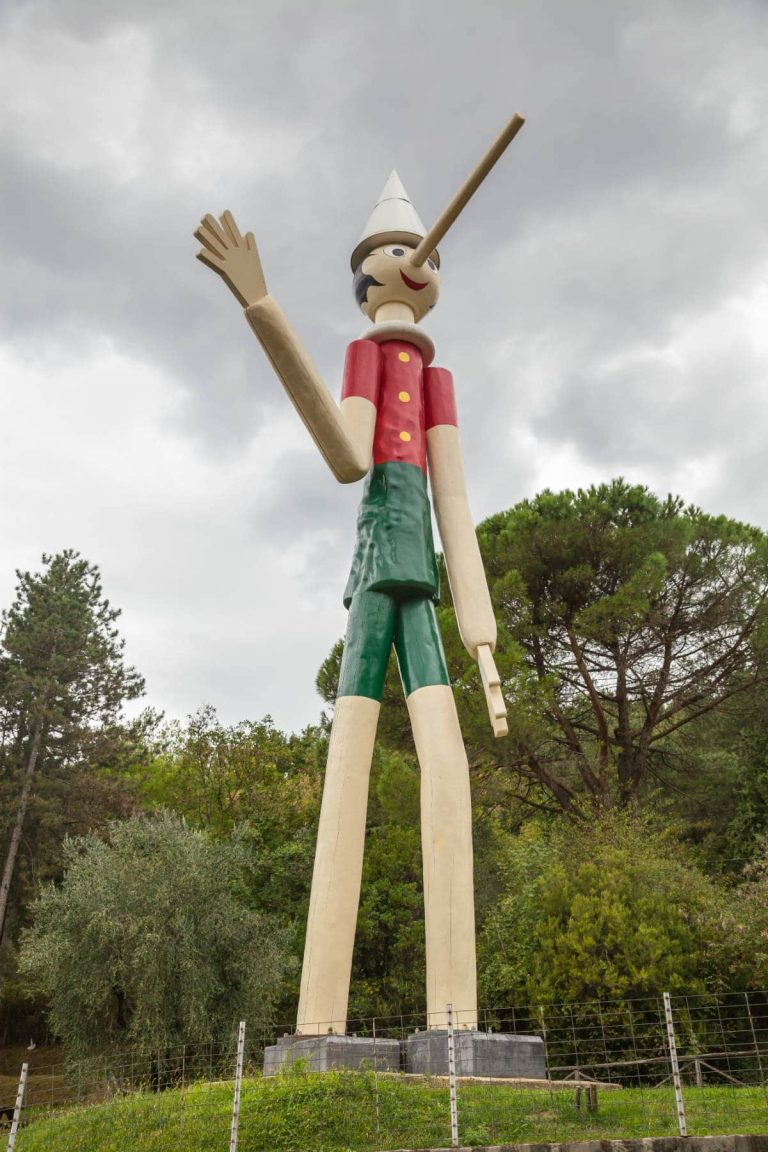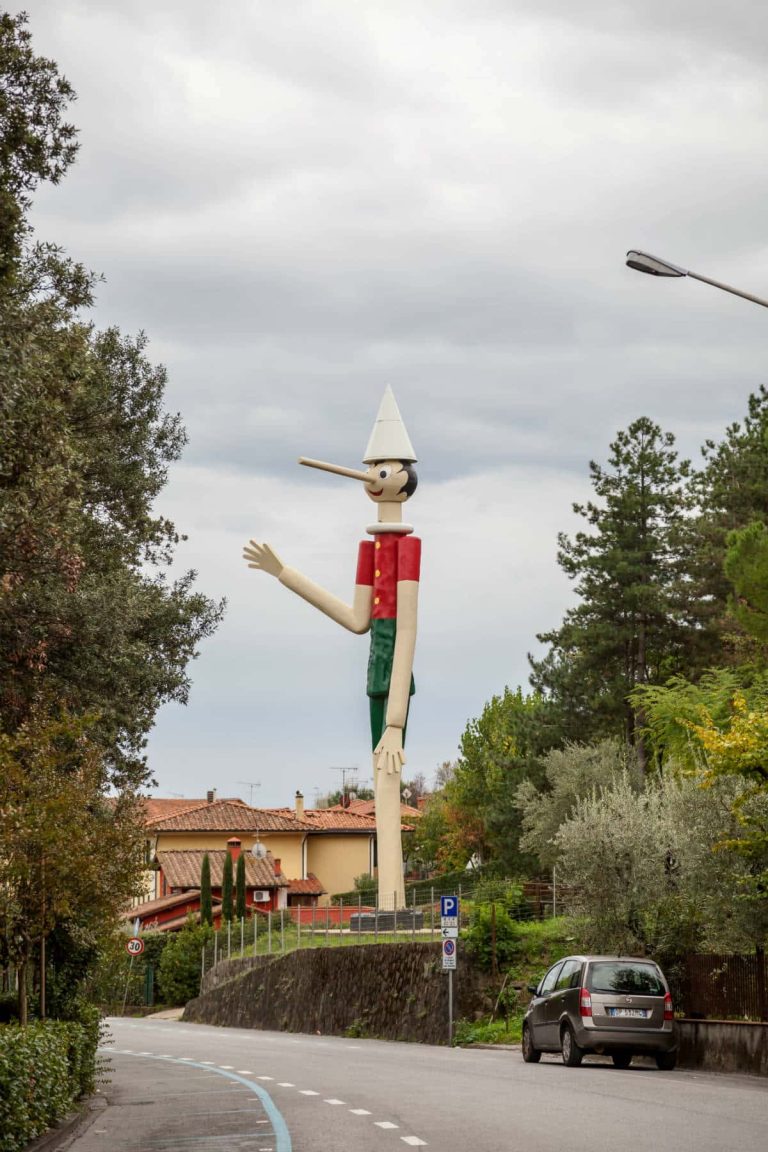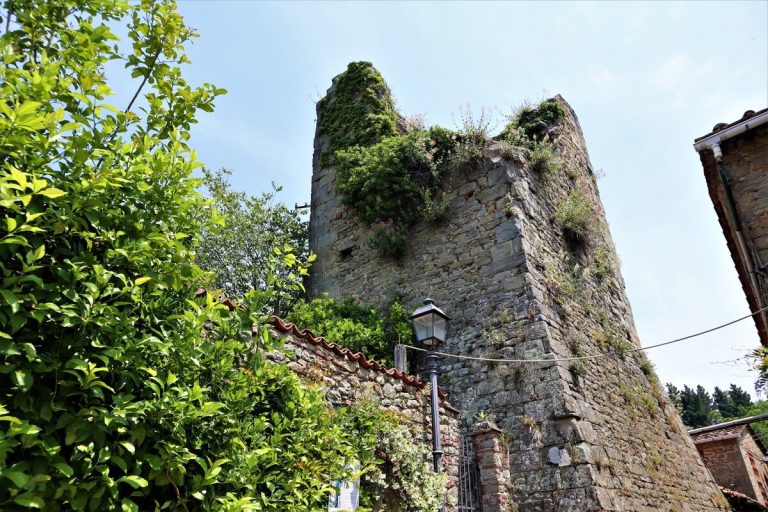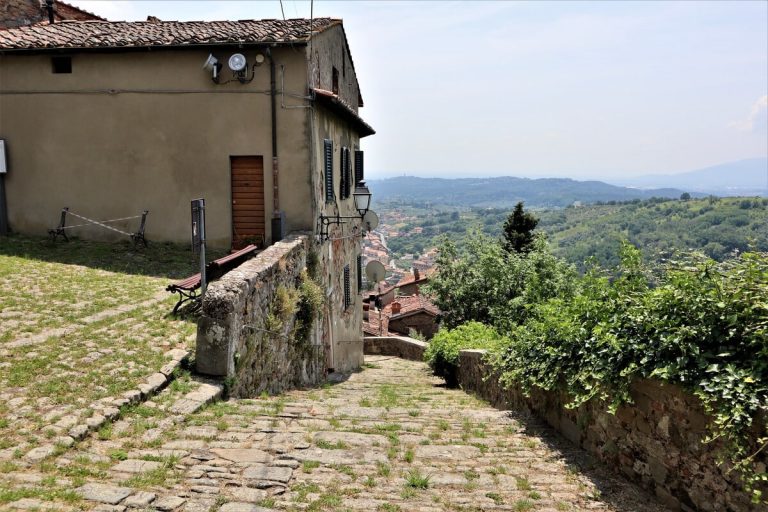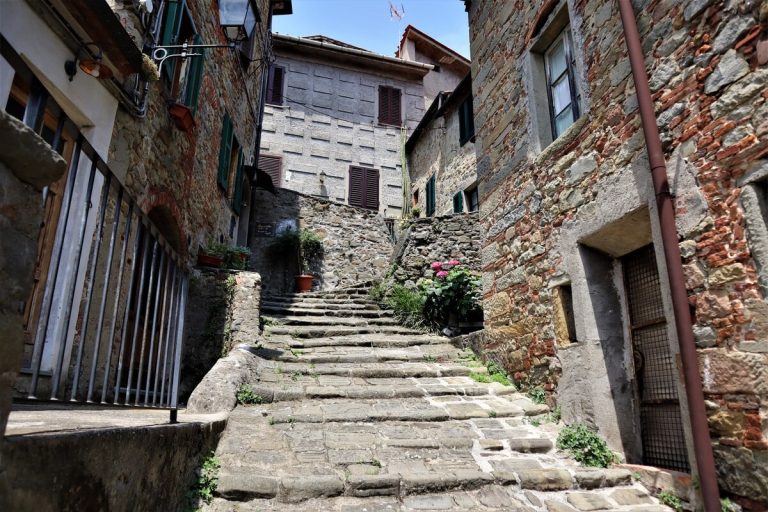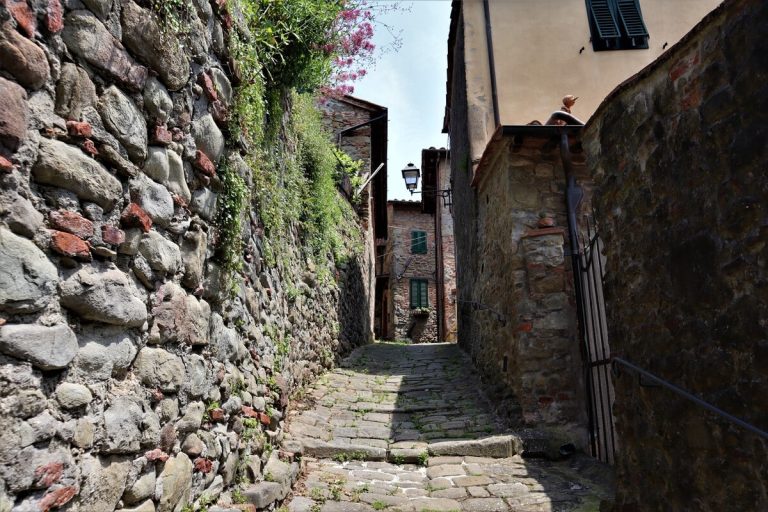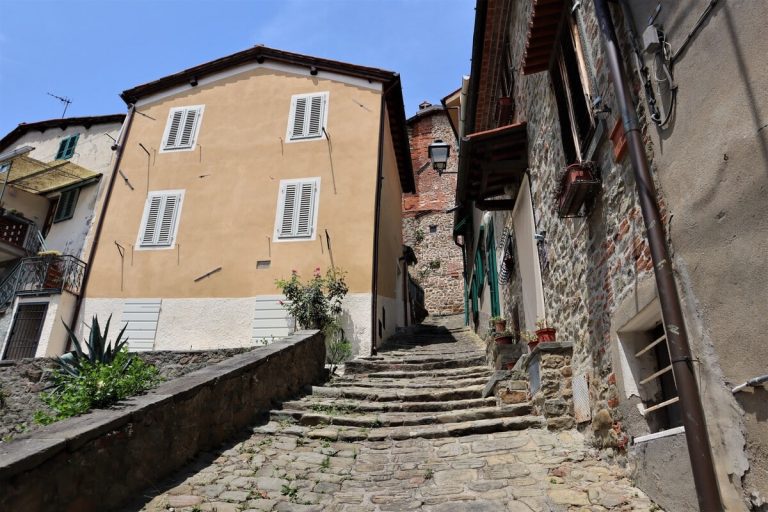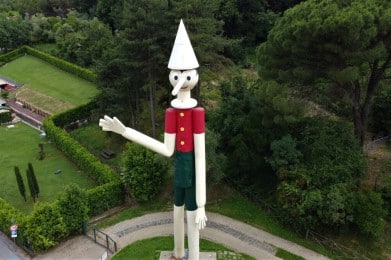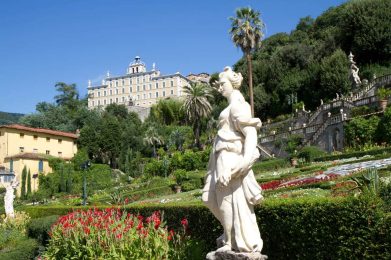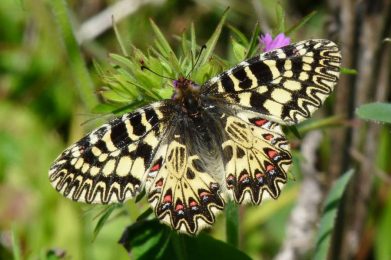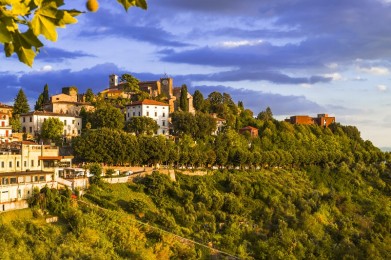Tucked among the green hills of the Valdinievole in the province of Pistoia, Collodi is a place that seems straight out of a story, and not by chance: it is here that the magic of Pinocchio, the world's most famous puppet, comes to life. Collodi is not just a town to visit, but an experience to be lived with all the senses: an interweaving of medieval history, Baroque art, exuberant nature and fairy-tale imagery.
An eternal connection with Carlo Collodi and Pinocchio
The name of the village is inextricably linked to Carlo Lorenzini, a Florentine writer who adopted the pseudonym Collodi in honor of his mother's hometown, where he spent long periods during childhood and adulthood. From this deep connection came the inspiration for The Adventures of Pinocchio, a masterpiece of children's literature and a universal heritage. Today, Collodi is one of the symbolic places of the famous puppet, a favorite destination for families, fairy tale enthusiasts and the curious.
The ancient village: a waterfall of stone and silence
The ancient medieval village of Collodi lies on a steep hill 244 meters above sea level, like a cascade of stone houses that seem to be held back by the monumental Villa Garzoni, located at its base. Of military origin, Collodi is mentioned as early as the 12th century as a disputed outpost between Lucca and Florence, finally becoming a stronghold of the Republic of Lucca in 1442.
Walking through its stone-paved alleys is like walking through centuries of history: stone houses, fortified gates, remains of walls, and the Romanesque Church of San Bartolomeo, with a bell tower carved out of a defensive tower, dominate the upper part of the village, from which there are spectacular views of the Tuscan landscape. The absence of automobile traffic makes the experience even more authentic and evocative.
Villa Garzoni and the Baroque Garden
The focal point of the village is the imposing Villa Garzoni, an ancient noble residence built on the ruins of the medieval castle. The villa is visible only externally, but its extraordinary Giardino Storico is open to visitors: a masterpiece of 17th-century Italian Baroque, enriched by monumental staircases, allegorical statues, water features, artificial grottoes and scenic terraces.
Prominent among the garden's attractions is the "water staircase," guarded by two female statues symbolizing Lucca and Florence, and topped by the figure of Fame blowing in a gushing shell. The garden was restored in 2007, keeping intact the hydraulic system designed in the 18th century by Ottaviano Diodati, a prominent scientist and intellectual of his time.
Butterfly House: a flight into tropical nature
Inside the Garzoni Garden, a crystal and stone greenhouse houses the Butterfly House, an exotic microcosm where hundreds of tropical butterflies from all over the world fly free. Nestled among lush plants, visitors can observe all stages of the butterfly life cycle, and learn about the survival and beauty strategies of these "flying flowers." It is an educational and wonderful place, ideal for adults and children alike.
Pinocchio Park: where the fairy tale takes shape
A short walk from the garden is the famous Pinocchio Park, a unique project created in the 1950s to celebrate the most widely read fairy tale ever. Here, art, architecture, and play come together in an exciting itinerary that traverses the stages of the novel: the Piazzetta dei Mosaici, the statue of Pinocchio and the Fairy by Emilio Greco, Toyland, the Workshop of Words, and period rides.
There is no shortage of more recent references such as the world's largest wooden Pinocchio, a full 16 meters tall, made in 2009 on commission from the Carlo Collodi National Foundation. The whole town, from the painted walls to the souvenir stores, recounts the magic of the puppet who wanted to be a child.
Between culture, nature and tradition
In addition to its fairy-tale soul, Collodi is also a village of local history and culture. The presence of the Garzoni family, protagonists in the political events between Ghibellines and Guelphs, testifies to the strategic and political importance of the village. Even today, historical memory is alive during celebrations for the patron saint St. Bartholomew (late August), with costume re-enactments, shows, markets and tastings.
For lovers of nature walks, the Via della Fiaba (Fairy Tale Trail) starts from Collodi, an hour-and-a-half walk that connects the village to Pescia, passing through olive groves, Roman paths and rolling hills.
Why visit Collodi?
Because it is a place where time stands still, imagination comes to life and art blends with nature. A corner of Tuscany where every stone, every corner and every flower tells a story. Collodi is the town where children's dreams intertwine with adults' memories, where you come to admire and stay to be moved.

